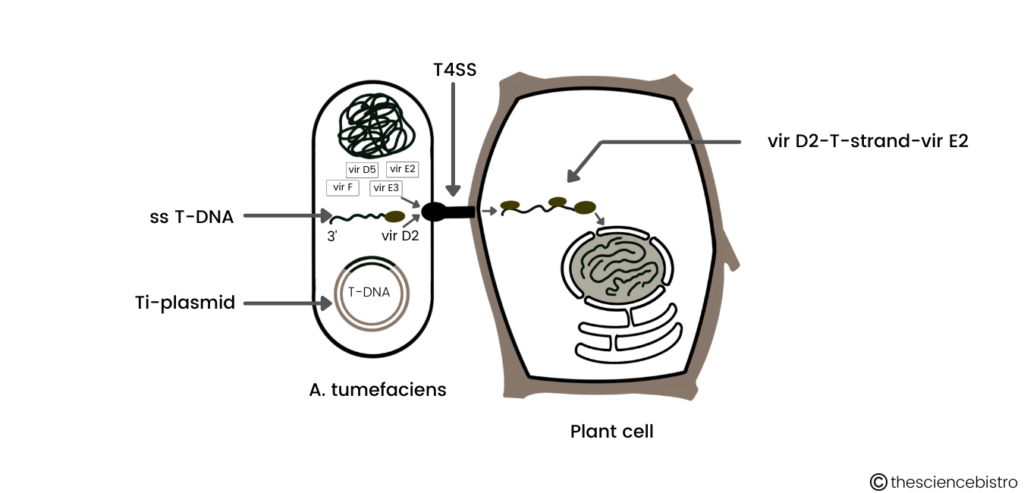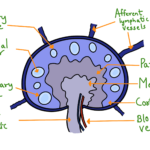The last article described the Agrobacterium-mediated gene transfer in plants via Ti-plasmid, in this article the mechanism of transfer of T-DNA is described in detail.
The process of integration of Ti-plasmid in plants is mediated by specific operons of genes known as vir genes. These vir genes do not themselves get transferred into plants but help the process of transfer. There are eight different operons of vir genes namely vir A, B, C, D, E, F, G, H. Each operon contains a different number of genes. The genes vir A and vir G are constitutively active while the expression of all other genes is regulated by the product of vir A and vir G genes. vir A and vir G proteins form a two-component system that responds to different signals and brings about the expression of all other vir genes. Vir A is a sensor kinase that acts as a receptor and spans the agrobacterial membrane. The receptor responds to certain signals like acetosyringone which is usually added externally added or produced by plants cells. Interaction of acetosyringone and membrane receptor results in phosphorylation of sensor kinase at histidine. This phosphate is then transferred to vir G proteins by phosphorylating it at aspartate residue. This transfer of phosphate groups activates the vir G proteins which act as a transcriptional regulator of all other genes.
ir G proteins mediate the transcription of different genes by binding to a regulatory sequence known as ‘vir box’ and upregulating the transcription. The strand of DNA that is transferred in plants is known as T-DNA (T-strand). The product of genes vir D1 and vir D2 are responsible for the generation of T-DNA. Vir D2 proteins act as endonucleases and cut the phosphodiester bond to form a nick in the T-DNA. It also gets covalently attached to the T-strand at the 5’ end. T-DNA also contains a specific sequence known as ‘overdrive sequence’ to which vir C1 and vir C2get attach to stimulate the process of transfer.

In order to transfer the T-DNA from bacterial to plant cells, the T-DNA must cross many barriers which include the peptidoglycan layer, plasma membrane, the outer membrane of bacteria as well as cell wall and cell membrane of plant cells. Agrobacterium tumefaciens forms a special kind of complex known as ‘Type four secretion system (T4SS)’ for the transfer of T-DNA. The T4SS complex is also known as ‘mating pair formation apparatus (Mpf)’. This complex is believed to form a pore or channel through which T-DNA can be transferred. The formation of this T4SS complex is governed by 11 different proteins coded by vir B1-vir B11 along with vir D4. The T4SS complex is further divided into two components which are ‘T-pillus’ and ‘membrane-associated complex’.
Apart from vir D2, several other proteins are also translocated in plants along with T-DNA which include vir E2, vir E3, vir F, and vir D5. The 5’ to 3’ orientation of T-DNA that is transferred in plant cells includes vir D2-T strand-vir E2 complex which is also known as T-complex. The vir D2 and vir E2 have nuclear localization signals which help the T-DNA to enter the nucleus of plant cells. After entering the nucleus the T-DNA becomes double-stranded and the integration of the T-DNA occurs at a random position in the plant genome.



